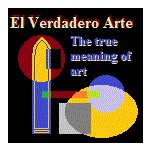
|
El Verdadero Significado Del ArteThe true meaning of art |
Desde hace algunos años, varios cibernautas autodenominados artistas han manipulado el termino "arte" a su conveniencia, provocando que se interprete como algo puramente comercial de este, en lugar de un medio para transmitir sentimientos.
A diferencia del artista que antaño se dedicaba a un oficio en que aplicaba el arte, el ciberartista protesta que se reconozca el arte como un trabajo propio, desvinculado de cualquier otro significado que pueda tener.
Cuando un artista principiante publica alguna obra, es frecuente que reciba criticas negativas debido a no seguir los estándares de su comunidad, en el que ante cualquier tipo de creatividad se mofan del autor. También es común que menosprecien las obras de otras personas debido a que no encajan con su definición personal de “anatomía”. Dibujar una mujer con complexión delgada, o un hombre con complexión “gorda”, parece ser lo mismo que incurrir en una falta anatómica.
Los ciberartistas consideran que el arte debe ser algo puramente comercial, y no dedicado a la expresión y transmisión de cultura; desde vender el "servicio" de dibujar un pedido, hasta dibujar una plantilla para vender un mismo dibujo de diferentes personajes.
From some years ago, many cybernauts self-proclaimed artists have been manipulating the definition of “art” at their convenience, misinterpretating it to purely commercial instead of a way to convey feelings.
Unlike the ancient artist that had a job where he applied the art, the cyber-artist claims that the art shall be conceived as a job by itself, unlinking it from any other meaning that it can have.
When a beginner artist post a new artwork, it’s frequent that it receives bad reviews because of not following the community standards, and they attack and make fun of any form of creativity of the artist. Also, it’s common that people despise other people artwork because of not matching with their personal definition of “anatomy”. For that people, drawing a women with a thin complexion or a men with a fat complexion is incurring an “anatomy fail”.
The cyber-artists thinks that the art shall be purely commercial, and not dedicated to the expression and transmission of culture; from selling the “service” of drawing a commission, to drawing a template to sell the same draw with different characters.
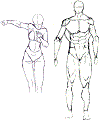
|
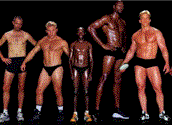
|
|
Anatomía correcta según ciberartistas.
Right anatomy by a cyber-artist. |
Competidores de las olimpiadas, teniendo diversidad de proporciones.
Olympics competitors, having proportions diversity. |
Varios usuarios de comunidades de arte acosan a otros usuarios cuando estos usan como modelo una complexión que esta fuera de sus estándares, justificándose en que están recalcando "errores anatómicos", y que repasen tutoriales de "anatomía correcta" o dejen de dibujar por "carecer de talento" o habilidad. Esto evidencia el desconocimiento sobre conceptos abstractos como el arte, que pueden interpretarse de formas distintas, pero imponen la suya como definición absoluta. La composición, complexión, técnica o meticulosidad de la obra no definen su estatus como arte.
Entre los usuarios, se ha creado un elitismo basado en la técnica, imperando en este sobre todo el estilo "anime", ilustrando la complexión delgada que impera en Japón, o complexiones sexualizadas para atraer clientes. Bajo su definición de arte, suelen dejar de lado otras expresiones que requieren también de imaginación y técnica, como lo es la carpintería, arquitectura y metalurgia, e incluso en la misma disciplina artística menosprecian otras obras por detalles insignificantes.
Many users of the art community harass other uses when they use as model a complexion that isn’t in their standards, justifying themselves saying that they are pointing “anatomy fails”, and telling the users to view “right anatomy” tutorials or to stop drawing for “not having talent” or ability to draw. This evidences the misunderstanding about abstract concepts like “art”, that can have many different interpretations, but users impose their definition as the right and only to follow. The composition, complexion, technique or the meticulousness of an artwork didn’t define its status like as art.
Between the users, there is an elitism based on the technique, prevailing over the others the “anime” style, illustrating the thin complexion that prevails in Japan, or sexualized complexions to attract customers. Under that definition of art, they usually left apart other expressions that also require imagination and technique, like carpentry, architecture and metallurgy, and even in the same art discipline underestimate other people artwork because of slight details.
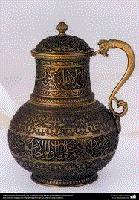
|
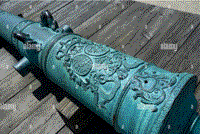
|
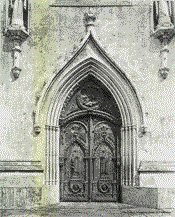
|
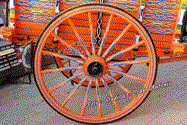
|
|
Orfebrería Islámica
Islamic orfebrery |
Cañón de bronce español
Bronze cannon from Spain |
Puerta de iglesia de santo Domingo Manila
Domingo Manila Church's door |
Carro de Mecerreyes
Mecerreyes cart |
Antiguamente el arte no era un único campo,era parte integral de otros oficios, en que los artesanos ponían mas de su alma a sus obras. El ciberartista desprecia la autenticidad ajena por que no sigue el camino que este siguió para hacer su estilo mas comercial, por lo que es un arte mas personal, a diferencia del arte comercial que impone una barrera al autor para expresarse libremente.
La teoría del color es una simplificación del uso de colores, al asignarles un valor tangible, siendo por ejemplo sentimientos, formas o elementos específicos, sin tomar en cuenta que, dependiendo de la región y cultura, tanto su significado como interpretación cambian, incluso teniendo influencia de la experiencia del usuario. Esta estandarización de las expresiones y colores solo ha facilitado a inteligencias artificiales el imitar fácilmente a los artistas, pues tras analizar varias obras, pueden determinar que elementos visuales representan algún sentimiento humano, agrupando elementos hasta recrear una obra humana.
Los usuarios defienden que, a pesar de que las IAs pueden hacer ilustraciones, no pueden crear “arte” debido a que no sienten, pese a esto, han podido plasmar las emociones humanas debido a que se ha abusado de la teoría del color, haciendo que dibujar se convierta en un algoritmo en lugar de ser una expresión propia. Es por eso que la estandarización mata el arte, pues hace que este se vuelva predecible, replicable, y excluyente hacia otras culturas.
Formerly, art wasn’t a single field of study, it was an integral part of other fields and jobs, where the craftsman put more of their soul in their works. The cyber-artist underestimates the others authenticity because they doesn’t followed the same way he followed to make his style more commercial, what makes the authenticity a more personal art, unlike the commercial art that imposes a barrier to the author to freely express themselves.
Color theory is a simplification of the use of color, assigning they a tangible value, being for example the feelings, shapes or certain elements, ignoring that the interpretation and meaning changes between each culture and region, even the personal interpretation of the user. This standardization of the expression and use of color only make it easier to artificial intelligence to emulate the artists drawing style, only analyzing various artworks, determinating visual elements that represents human feelings, grouping elements until recreating a human artwork.
Users defend that, despite the AI can make illustrations, it can’t make “art” because machines can’t feel, despite this, they have embodied human emotions due to the abuse of color theory, making the drawing process an algorithm instead of a self expression. That’s why the standardization kills art, because it causes the art become predictable, replicable and excluyent to other cultures.

|
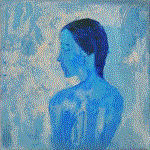
|
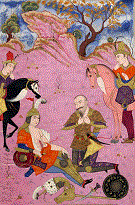
|
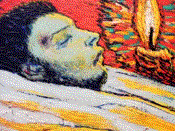
|
|
“La travesía de Elena”. Por Ana Santos
"Elena's crossing" by Ana Santos |
“Depression”, por Stability AI |
Suhrab asesinado por su padre
Suhrab killed by his father |
“Muerte de casagemas” de Pablo Picasso
"Death of Casagemas", of Pablo Picasso |
Varios maestros hacen énfasis en el realismo, estudiar historia del arte, o saber todo sobre anatomía antes de empezar a desarrollar el estilo propio. El artista es el que debería crear los medios, por lo que forzar a aprender el realismo en lugar de que practique desarrollando su estilo, solo suprime la intención y originalidad del artista.
En una sociedad industrial, las normas como la “anatomía correcta” y “teoría del color” son la herramienta perfecta para suprimir al artista de su obra, sin embargo hacer esto es imposible, pues el contexto social, las costumbres e intereses del artista son algo sumamente arraigado en sus obras. La cultura, la época histórica y forma de ver el mundo cambian radicalmente el arte.
Many teachers make emphasis on the realist style, studying art history, or knowing all about anatomy before starting to develop his own style. The artist is who should create the means, so forcing to learn realist style instead of developing his own style, only removes the intention and originality of the artist.
In an Industrial society, the rules like “right anatomy” and “color theory” are the perfect tool for erasing the artist of his own work, however that is impossible, because of the social context, traditions and interests of the artist that are present in his works. The culture, the historic age, and the way of seeing the world changes radically the art.
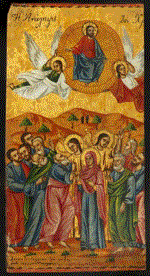
|
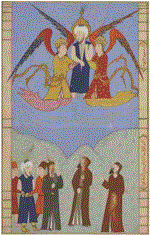
|
La ascensión de Cristo, representada a la izquierda en el siglo XIX en Europa, y a la derecha en el siglo XV en Oriente medio.
Ambas pinturas nos muestran parte de la vida del autor, desde el estilo en el que se dibujaba en la época y geografía en que habitaron, hasta el como concebían la vestimenta.
The ascencion of Christ, portrayed in the left image in the XIX century on Europe, in the right, in the Middle East on XV century.
Both paintings shows that the life of the author influences the painting, from the style that was used in the period ang geography where they lived, to the way they conceived the clothing.
Las obras tienen parte de la vida del autor, y son complementarios entre si, pues tanto puedes entender mejor al artista con su obra, y entender mejor la obra conociendo al artista. Esta no es razón para dejar de consumir obras de autores problemáticos, pues siempre se puede tener un interés histórico o social para estudiar a las personas por medio de sus obras.
Si el arte no se hace por cuestiones meramente comerciales, las persona que gusten de su arte podrán apoyarlos por medio de plataformas como patreon o con donaciones, así podrán seguir teniendo total libertad de sus obras sin ser intervenidas por quienes las financian. Sumado a esto, recordar que el arte esta presente en cualquier oficio.
Sin embargo, la estandarización también afecta a otros oficios haciendo que se preocupe mas por la masificación que la parte artesanal, impidiendo el mantener o crear cultura.
The artworks have part of the author’s life, and they are complementary to each other, so you can understand better the artist with his art, and the art knowing the artist. This isn’t a reason to stop consuming artwork from a problematic author, because you can have an interest social or historic to study the people through his art.
If the art isn’t made for only commercial reasons, people who likes the art can support the artist through platforms like patreon or by donations, so they can still having total freedom of his artwork without being intervened by who finance they. Aded to this, the art is present in every job.
However, the standardization also affects other jobs causing greater attention to the mass production instead of the artistic handwork, impeding the keeping and creation of culture.

|

|
|
Afedali, arcabuz marroqui decorado con motivos florales.
Afedali, morocco archebuz flower decorated. |
Armas producidas masivamente.
Mass produced weapons. |
La importancia de mantener la cultura vigente, y de crear nuevas formas de entenderla, no solo es la conservación de las tradiciones, si no de revolucionarlas ya sea absorbiendo elementos de otras culturas o innovando las propias.
The importance of maintaining alive the culture, and making new forms of understanding it, it’s not only the conservation of the traditions, but the revolution of it by absorbing elements from other cultures, or innovating the own.
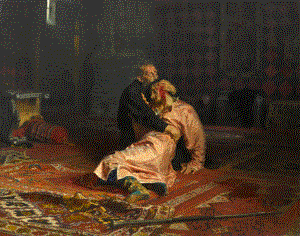
|
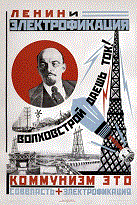
|
|
“Ivan el terrible y su hijo”, 1883, Ilya Repin
"Ivan the terrible and his son", 1883, Ilya Repin |
Propaganda electrica Leninista
Leninist Electric propaganda |